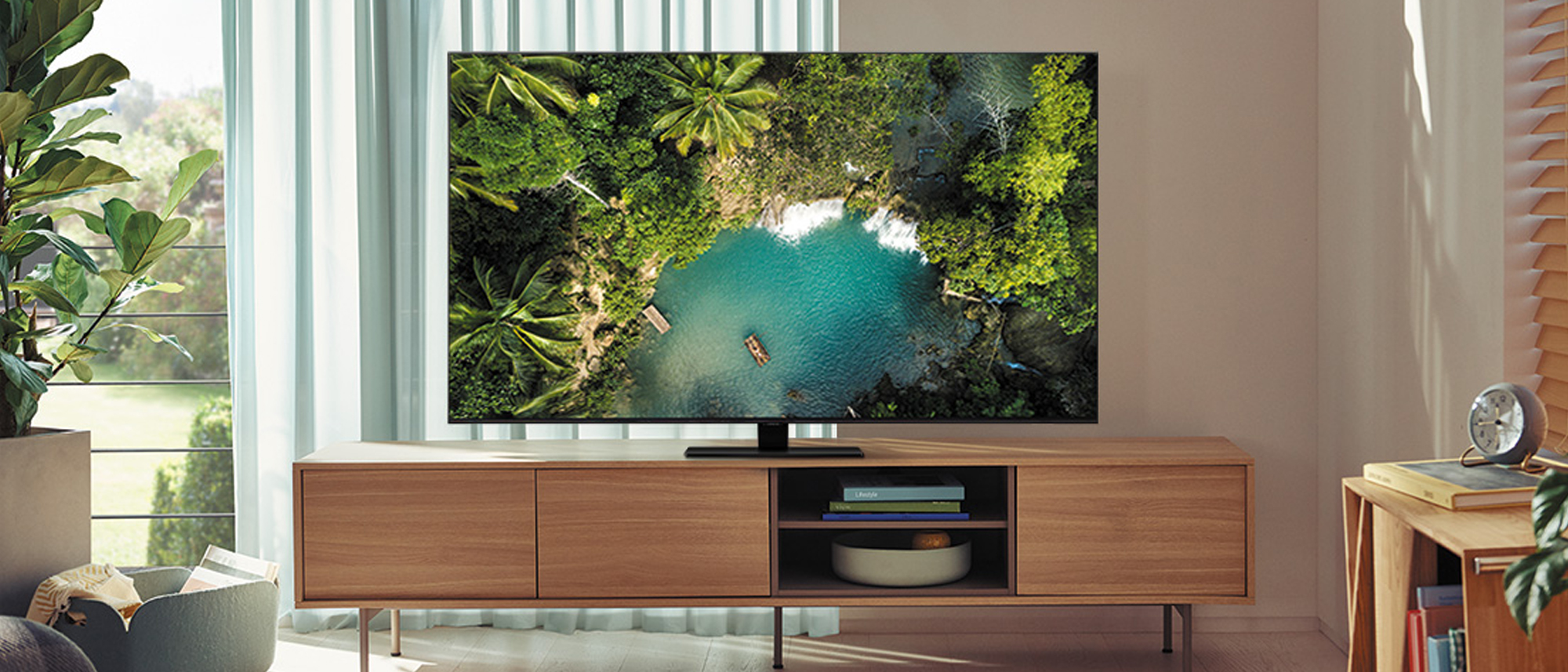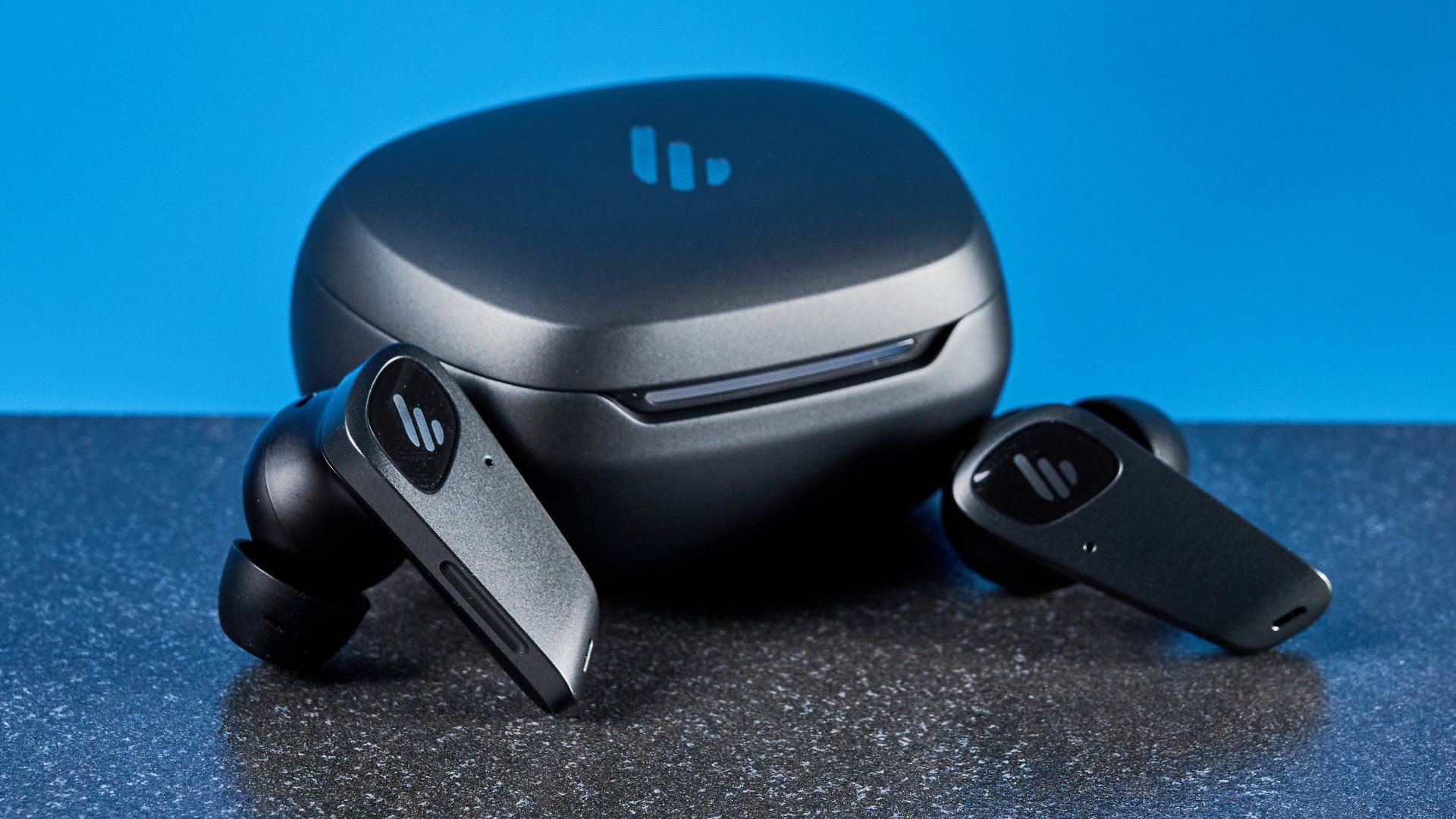Tom's Guide Verdict
The Samsung Q80B QLED TV (QN50Q80BAF) isn’t ideal for everyone (including gamers), but for most people its picture, sound, and price make it a midrange TV worth considering.
Pros
- +
Good brightness
- +
Excellent viewing angles
- +
Strong sound
- +
Good value
Cons
- -
Minor picture quality issues
- -
50-inch model has different specs
- -
Does not support Dolby Vision
Why you can trust Tom's Guide
Price: $949.99
Screen size: 50 inches
Model: QN50Q80BAF
Resolution: 3,840x2,160
HDR: HDR10+, HLG
Refresh Rate: 60Hz
Ports: 4 HDMI 2.0, 2 USB
Audio: 40W
Smart TV Software: Samsung Tizen
Size (without stand): 43.9x25.4x2.1 inches
Weight (without stand): 30.2 pounds
The Samsung Q80B QLED TV (QN50Q80BAF) may be the middle child in terms of Samsung’s overall suite of offerings and its price ($949.99 as tested). But one eyeful and earful of what it can do could deceive you into thinking it’s a higher-end set. Utilizing a number of Samsung’s most forward-looking technologies, and loaded with attractive features, the Q80B is a set that will easily earn its pride of place in your living room.
That’s not to say the Q80B is problem-free. Its picture isn’t perfect in every situation; and though every larger size has HDMI 2.1 ports — including the 55-inch, 65-inch, 75-inch and 85-inch models — they’re absent on the 50-inch model (which we evaluated), so the set is better for watching than for gaming. Still, the Q80B is a good choice for the right situation, and definitely one of the best TVs you’re likely to find at this price range.
Samsung Q80B QLED TV (QN50Q80BAF): Pricing and availability
As with many of its lines of TVs, Samsung offers the Q80B series in a wide variety of sizes catering to any viewing environment. The five choices are the following:
- Samsung Q80B QLED TV 50" Class (QN50Q80BAF): $949.99
- Samsung Q80B QLED TV 55" Class (QN55Q80BAF): $1,099.99
- Samsung Q80B QLED TV 65" Class (QN65Q80BAF): $1,199.99
- Samsung Q80B QLED TV 75" Class (QN75Q80BAF): $1,299.99
- Samsung Q80B QLED TV 85" Class (QN85Q80BAF): $1,799.99
Because most of the TVs in the Q80B line are similarly outfitted, we expect roughly equivalent performance on models 55 inches and up. The 50-inch QN50Q80BAF model, however, has a few key differences, including a lower panel refresh rate (60Hz instead of 120Hz) and no HDMI 2.1 ports, which will put it at a slight disadvantage while watching fast-action content (such as sports) and playing games.
Samsung Q80B QLED TV (QN50Q80BAF): Design and ports
The QN50Q80BAF is hardly large, but it’s a bit bulkier than other TVs you’ll see. Its 43.9-inch width and 25.4-inch height are par for the course, but the screen itself is more than a half-inch deep, with the full unit minus the stand 2.1 inches at its thickest point.
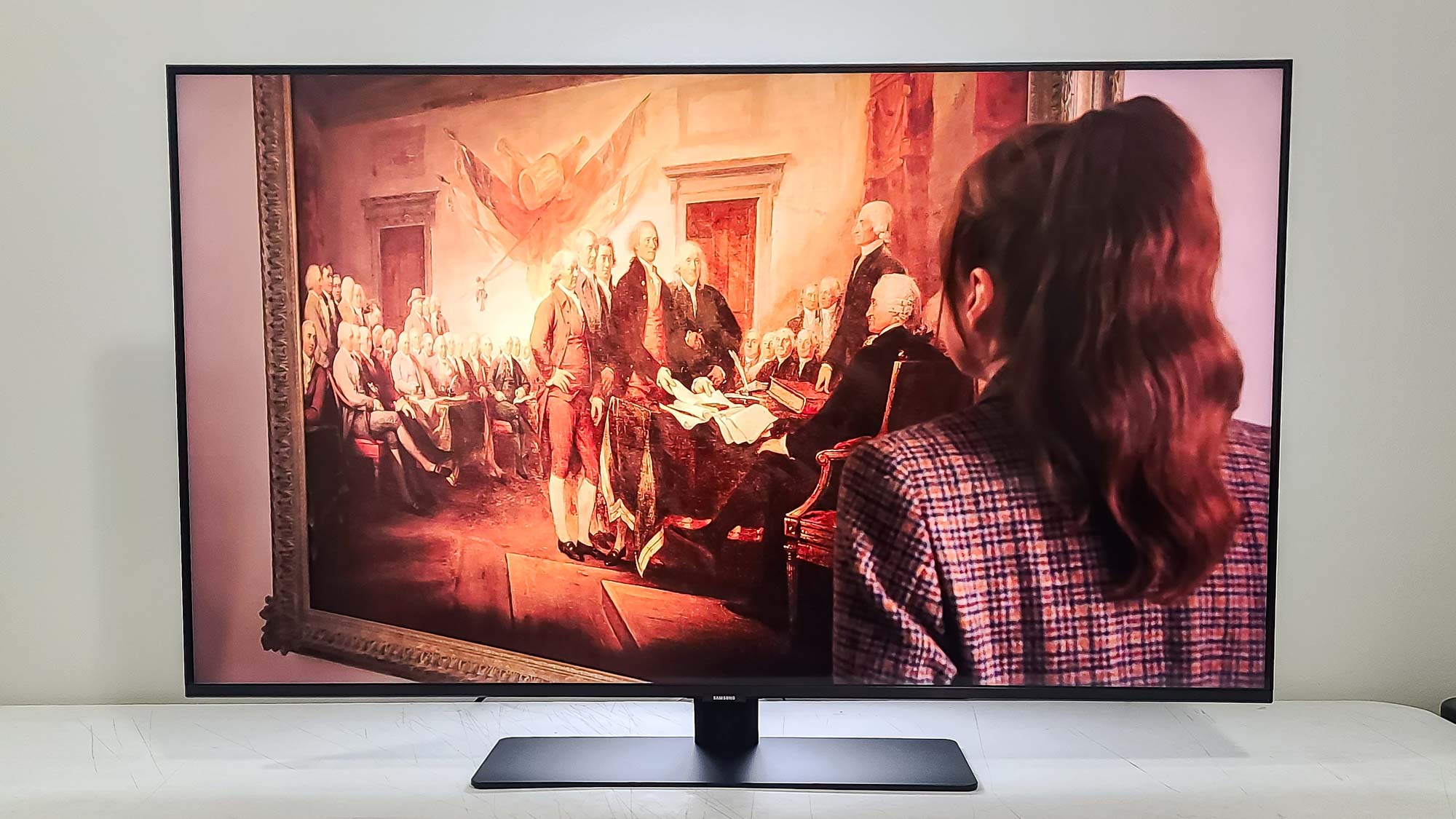
The bezel around the left, right, and top sides of the screen is one-eighth inch thick and just past one-third inch thick on the bottom (to accommodate the dead-center Samsung logo); but because it’s beveled, it appears wider than it actually is. Maybe the look is a touch old-fashioned, but it works.
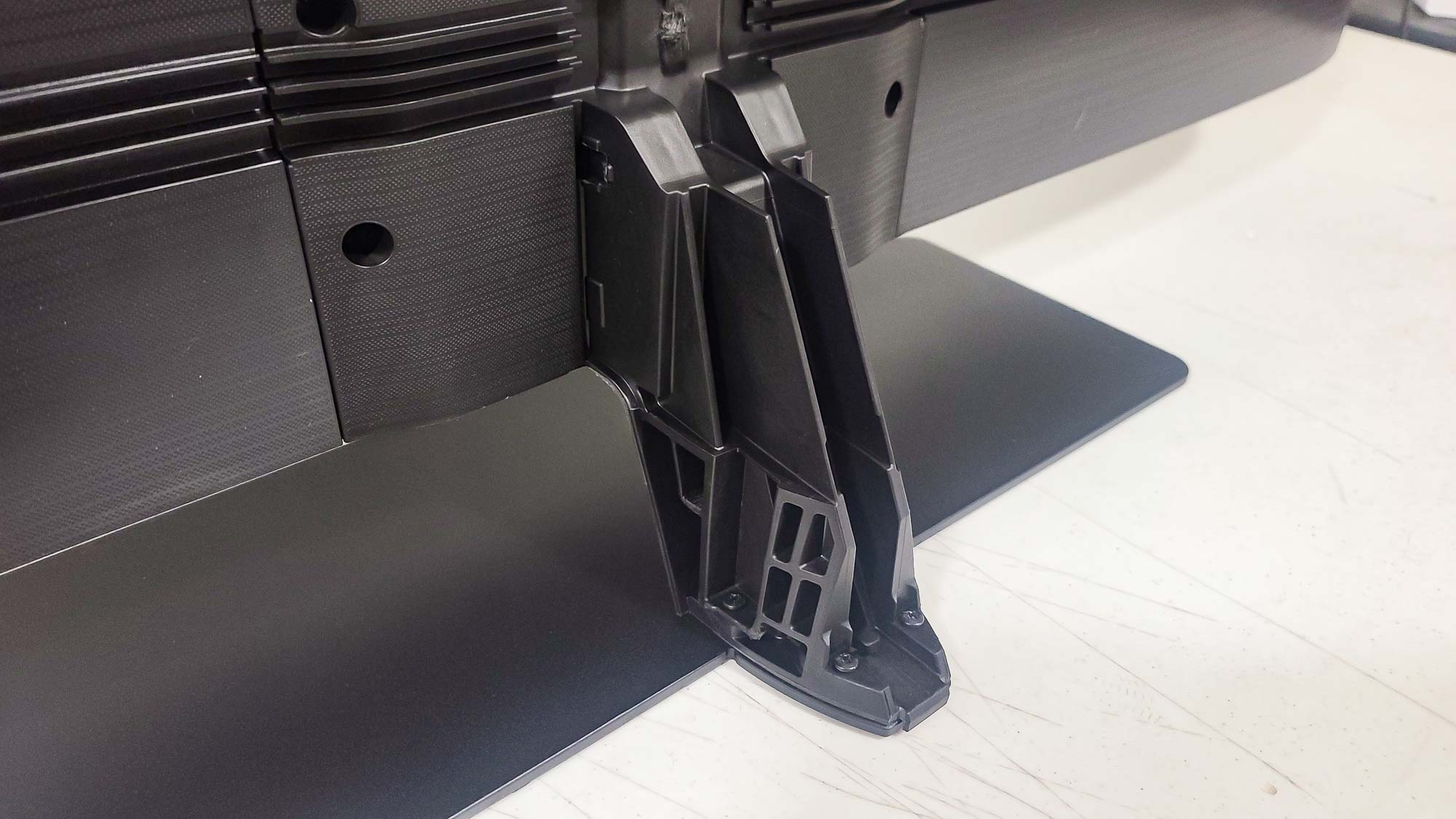
The stand, too, is nice in terms of presentation: a black, rectangular foot with rounded corners that connects to an angled center support with a rounded plastic cover on the back. It elevates the screen just shy of 3.5 inches, and accentuates the kitschy-cool vibe by giving it the feeling of floating. The stand is, however, annoying to install, as it requires securing the support to the foot with four awkwardly placed screws located beneath the back cover. Though our 50-inch review unit was manageable by one person, having someone else around to hold up the TV so you can reach the screws more easily would not be a terrible idea. Nor would skipping the stand altogether and just using the 200x200mm VESA holes on the back to mount the Q80B on a wall.

The power cable extends from the center left of the textured plastic rear panel, and may be routed through a series of horizontal channels to snake to the power outlet without cluttering up the back of your entertainment center. The ports are arrayed vertically on the right, all facing out toward the side for easy access.
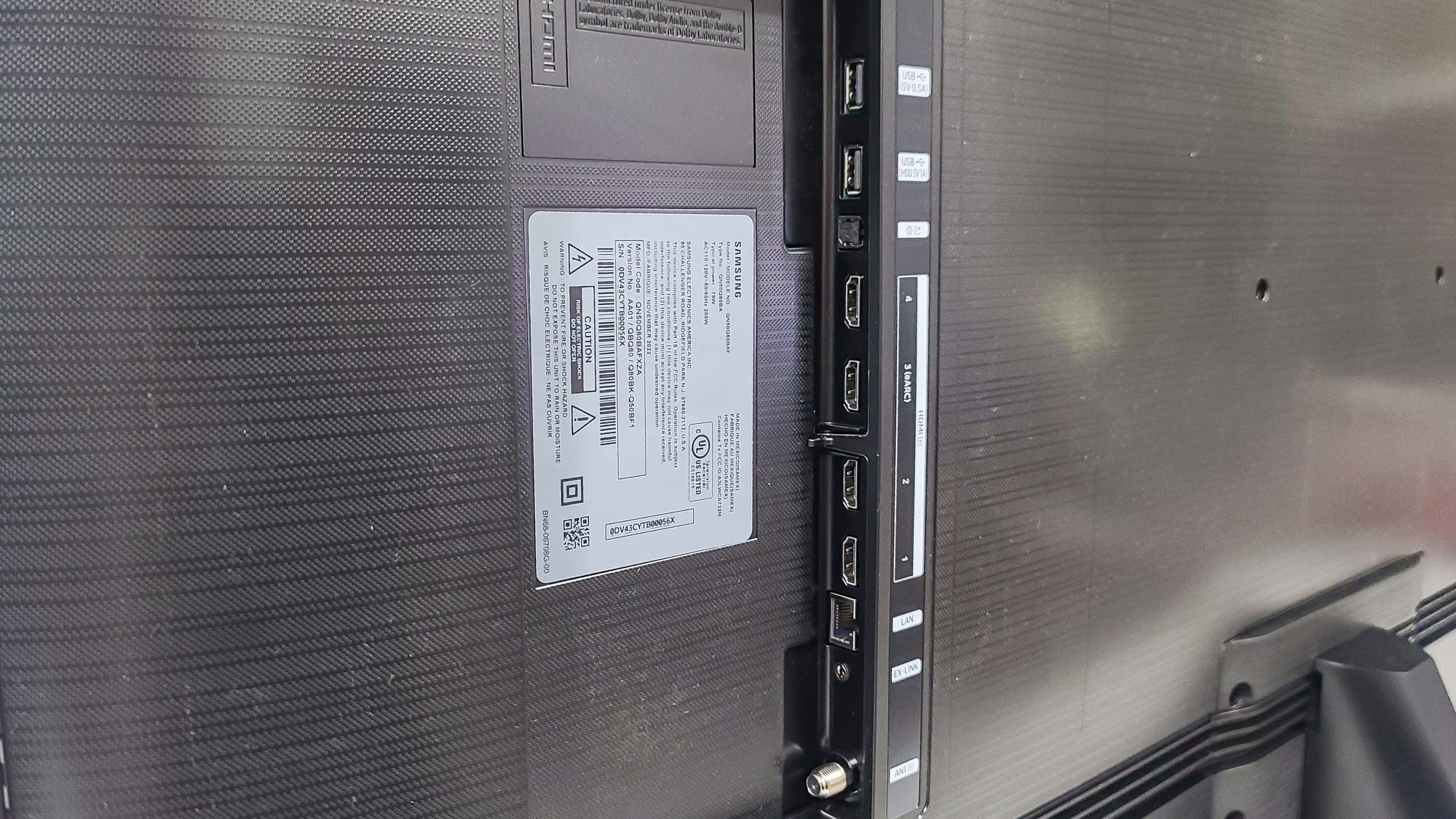
The collection comprises two USB ports (one maxing out at 0.5A, one at 1A), S/PDIF optical audio out, Ethernet, Ex-Link, coaxial cable, and four HDMI ports. On the QN50Q80BAF, these are all HDMI 2.0 — a shame, as Samsung has included more powerful HDMI 2.1 ports even on its smaller and less-expensive TVs, and as mentioned, every other model in the series has HDMI 2.1 ports instead.
Samsung Q80B QLED TV (QN50Q80BAF): Test results and performance
Samsung’s QLED TVs combine quantum dots with Direct Full Array LED backlighting to maximize color and contrast. To see how well the company succeeded with the Q80B, we applied our usual collection of tests run with an X-Rite i1 Pro spectrophotometer, a SpectraCal VideoForge Pro pattern generator, and Portrait Displays’ Calman calibration software.
In line with other recent sets from Samsung, the QN50Q80BAF proved unusually bright. Its 568 nits of brightness in Standard mode is surpassed only by the more expensive 43-inch Samsung QN90B, which blazed with 700 nits; no one else comes close, with even the runner-up, the 50-inch Vizio M-Series Quantum, far behind at 499 nits. In Filmmaker Mode (the closest to one with out-of-the-box calibration), the QN50Q80BAF’s 246 nits puts it right in line with the 43-inch Sony X80K (248 nits), but behind both the QN90B (277 nits) and even the less expensive 43-inch Q60B (with 314 nits).
As for SDR color, the Q80B’s Delta-E value (which measures the difference between the color at the video source and as displayed on the screen, with lower numbers being better) of 1.7906 in Filmmaker Mode puts it toward the front of the pack, ahead of the Vizio (1.85), but not quite the Sony X80K (1.6907) or even the Samsung Q60B (1.7727). Its 99.13% coverage of the Rec. 709 color gamut was likewise solid, if just short of what we saw with the 43-inch Sony A90K (99.65%), the Sony X80K (99.62%), and the LG A2 (99.21%).
Disney’s Colombia-set Encanto bloomed with rich equatorial hues and Top Gun: Maverick simmered with warmth in its exciting aerial fight scenes.
HDR brightness on the QN50Q80BAF was generally exceptional, with the set hitting 702 nits on 10% of the window in Filmmaker Mode, with results of about 500 or higher at every other window size. This doesn’t surpass what we saw from the QN90B — it got close to 1,000 nits in many situations — but it’s better than everything other comparable TV we’ve looked at. HDR color is another story: The QN50Q80BAF’s 70.66% coverage of the Rec. 2020 color gamut and 92.37% coverage of the UHDA-P3 color gamut (both in Filmmaker Mode) make it weak for the category. The Vizio’s 81.61% and 96.17%, and the Sony A90K’s 71.2% and 97.66% are clear winners; the Sony X80K wasn’t as good at the more demanding Rec. 2020 (68.09%), but still sprang past the Samsung with 93.46% of the UHDA-P3 gamut. If the QN50Q80BAF won’t thoroughly wow with its HDR color, it also won’t disappoint.
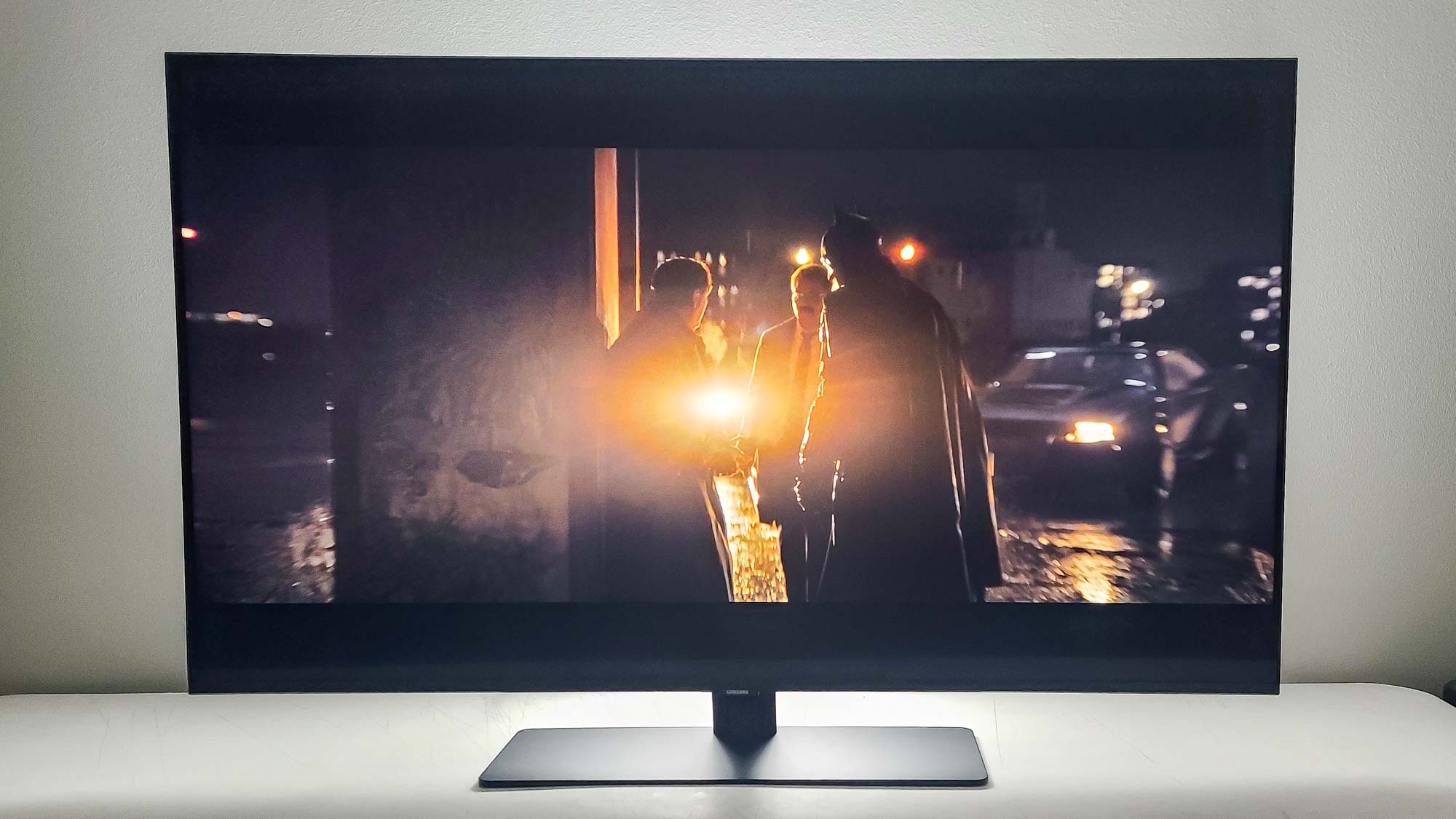
It certainly didn’t when we put away our testing equipment and watched the TV. Its absence of Dolby Vision support means you may miss out on some effects in movies and series that use it, but just about everything we watched looked terrific. Although The Batman revealed some blooming around especially bright objects, overall its balance between brighter and darker picture elements was satisfying and effective at capturing the shadowy nuances of both Gotham City and the Caped Crusader trying to save it. Denis Villeneuve’s Dune came across almost as well, with the transitions between light-starved interiors and sun-parched exteriors appropriately jarring, and the blackest elements standing out beautifully in each.
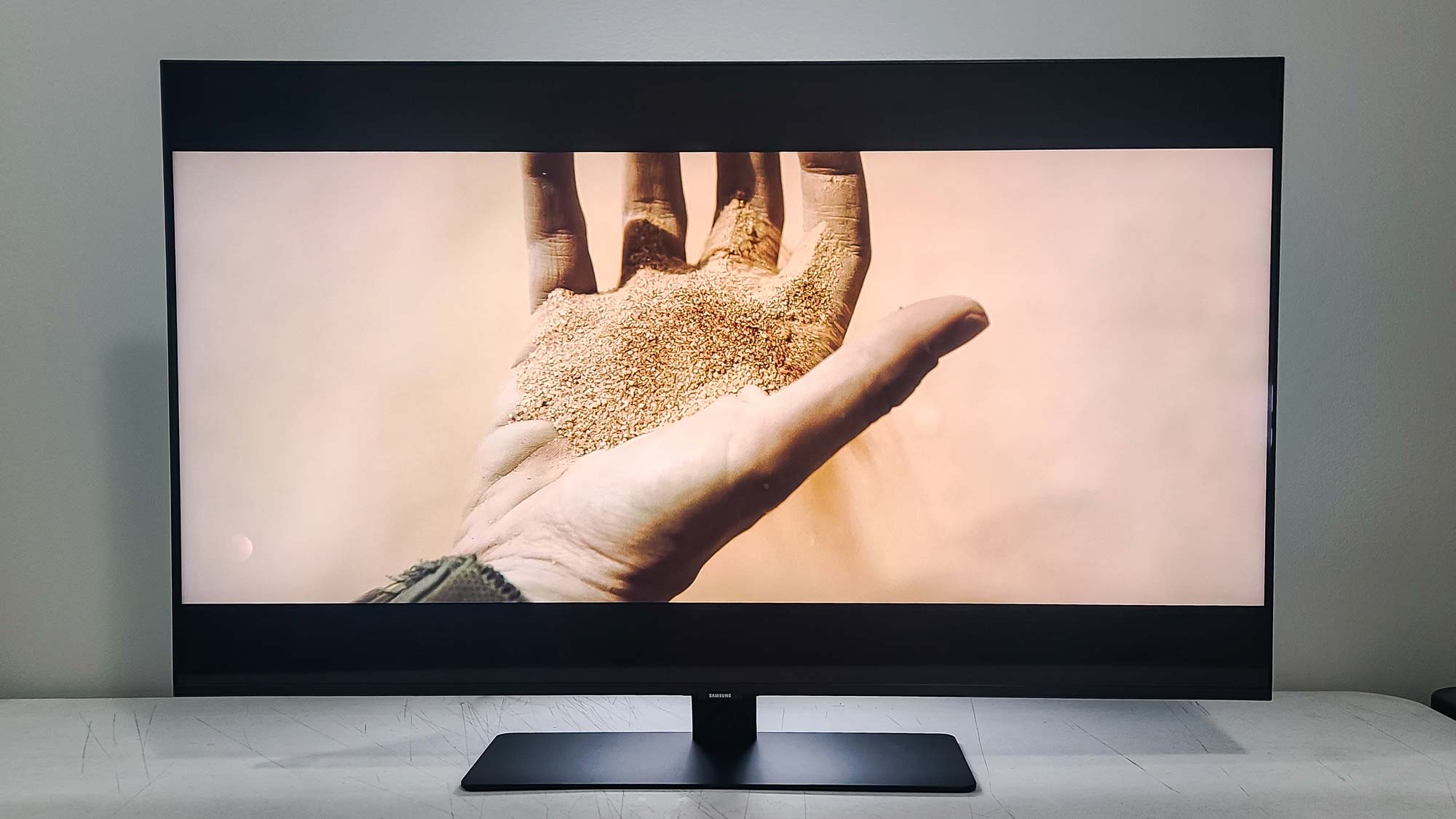
As for movies where broader color palettes were more important, Disney’s Colombia-set Encanto bloomed with rich equatorial hues and Top Gun: Maverick simmered with warmth in its exciting aerial fight scenes while correctly cooling down at slower moments in the story. The TV also upscaled the 1080p version of Mission: Impossible — Fallout to 4K with very little noticeable drop in detail.
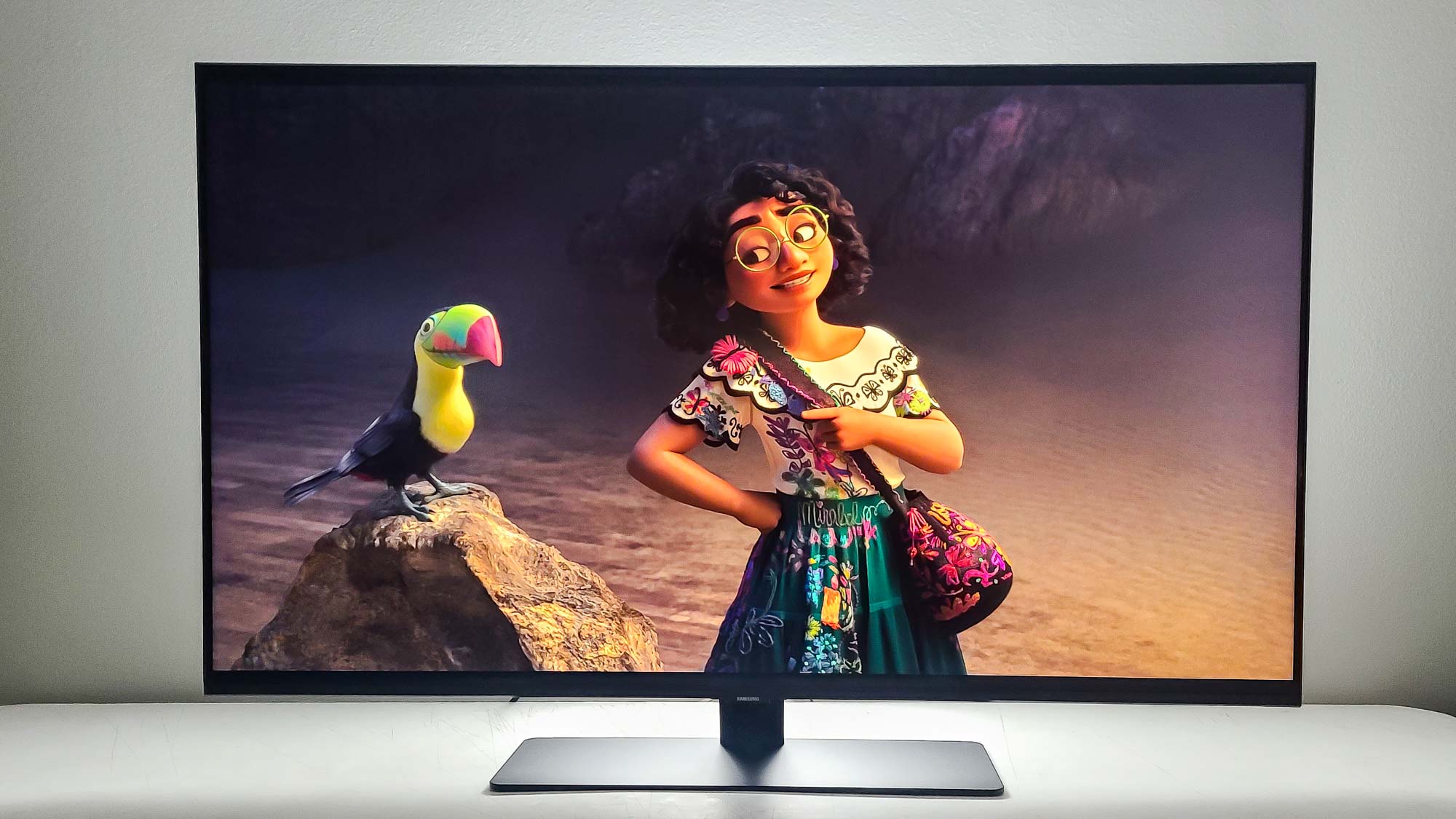
There’s one aspect of the QN50Q80BAF’s picture quality that deserves special mention: Its viewing angles are shockingly good, among the very best we’ve seen recently from any non-OLED TV. Although there is a graying effect when you view the screen from off-center, it is only slight, and you have to be at a truly extreme position for it to make any significant difference. (My testing area, which is not narrow, was almost not wide enough.)
Samsung Q80B QLED TV (QN50Q80BAF): Audio
As the QN50Q80BAF is equipped with a 40W speaker system and Dolby Atmos, you might predict the set’s sound to be better than average for a TV of this type — and you would be correct. The set had a surprisingly rich and full sound that enhanced the experience of movies and didn’t make you feel you were missing much when just listening to Spotify songs.
The Knife’s “Silent Shout” unrolled with some real oomph in its underlying bass line. Even if not it doesn’t offer as much as low end lovers would undoubtedly prefer, it set both the set and the table shaking at higher volumes, and provided the appropriately distortion-free thumping foundation from start to end. A soprano vocal track that climaxes in a high B-flat evinced no loss of clarity or warmth even with the volume cranked all the way up.
Action scenes in movies thrilled aurally, too, with Top Gun: Maverick gaining back some of the theatrical electricity it frequently loses on underpowered TVs. If Object Tracking Sound Lite, which purports to tie the sound to the motion on screen, didn’t blow us away, it did add some fun positional effects to Maverick’s constantly interweaving fighter jets. (The larger Q80B TVs use the non-Lite version of this feature, and could well render such scenes even better.)
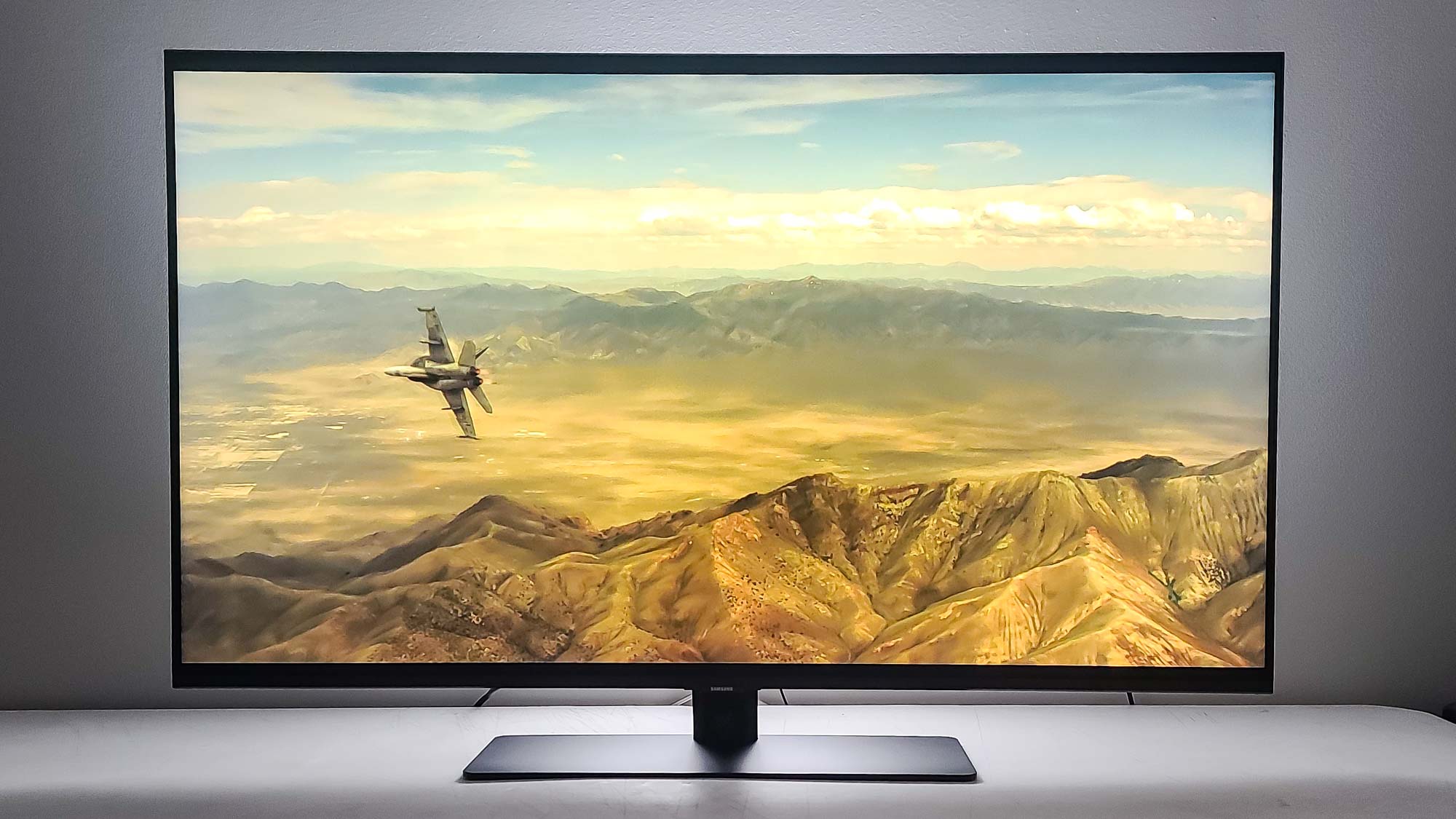
Although you may still want to upgrade your home entertainment center with one of Tom’s Guide’s best soundbars, you won’t need to unless you’re a true sound stickler.
Samsung Q80B QLED TV (QN50Q80BAF): Gaming
For gamers, the QN50Q80BAF isn’t too shabby as far as input lag. Its result of 13.2ms (as measured with a Leo Bodnar 4K Lag Tester), places it squarely below our 20ms threshold for good gaming but not our 10ms barrier for great gaming, which is where other recent Samsung sets have comfortable resided (the 43-inch QN90B managed 9.8ms and the 43-inch Q60B a blistering 9.1ms, making it our current champ); the Q80B doesn’t even surpass the 43-inch Sony X80K (11.1ms). Even so, it’s nothing to complain about.
What may elicit some gripes from gamers is the complete lack of HDMI 2.1 ports on the 50-inch model, even though they’re present on all the larger TVs in this family. These allow for features like 4K resolution at 120Hz and Variable Refresh Rate (VRR), which are becoming increasingly essential on gaming TVs. Samsung does offer its own version of another common HDMI 2.1 feature, Auto Low Latency Mode (ALLM), which activates game mode whenever gaming activities are detected. Many games will still play well — Assassin’s Creed Valhalla did in our tests, with good action handling, and its graphics in line with the video content we watched — but you may lose out on some smoothness in heavier action titles.
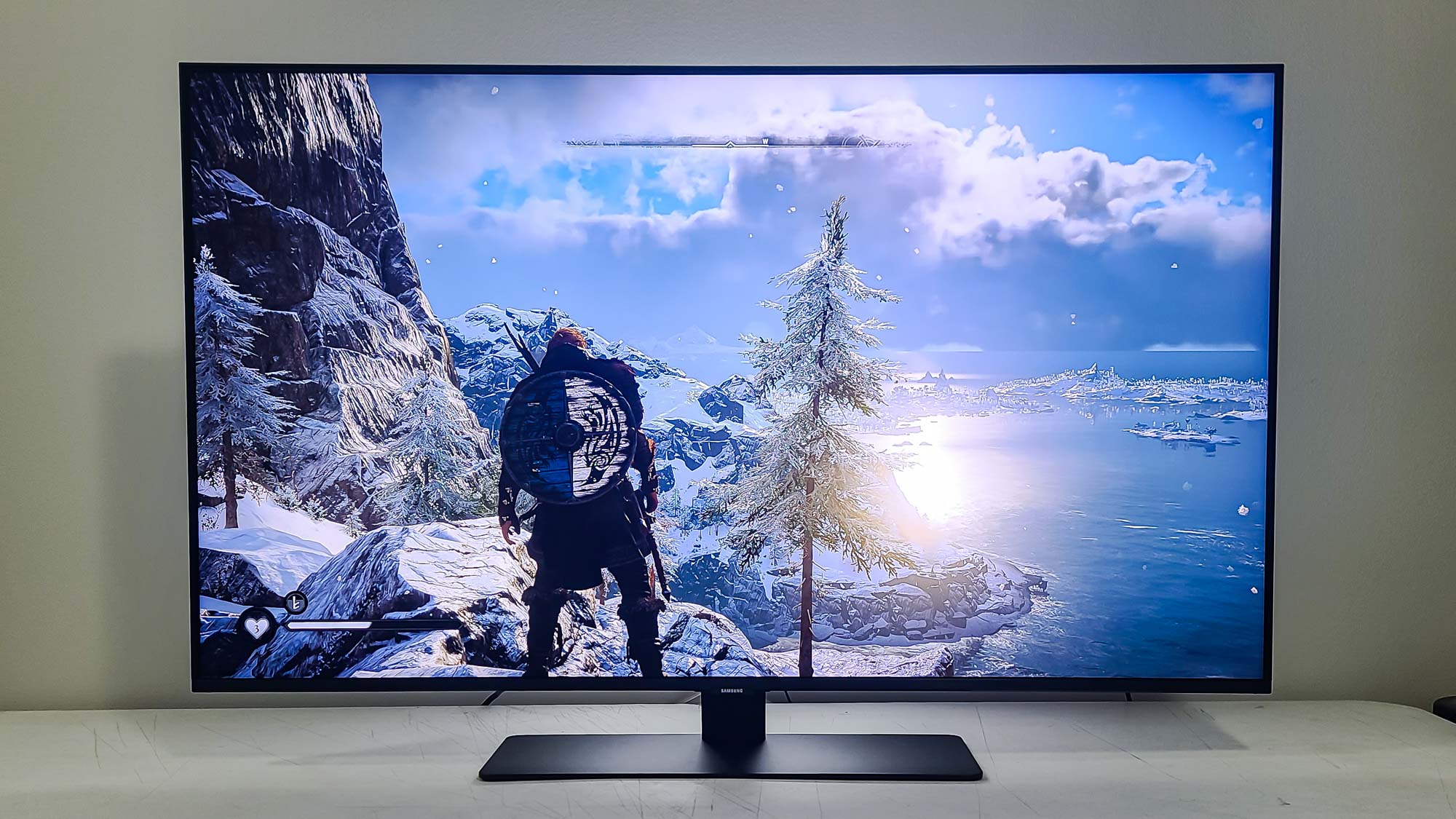
One of Samsung’s clever additions is a Game Bar that you can raise during play to adjust the frame rate and tweak the picture for specific gaming genres.
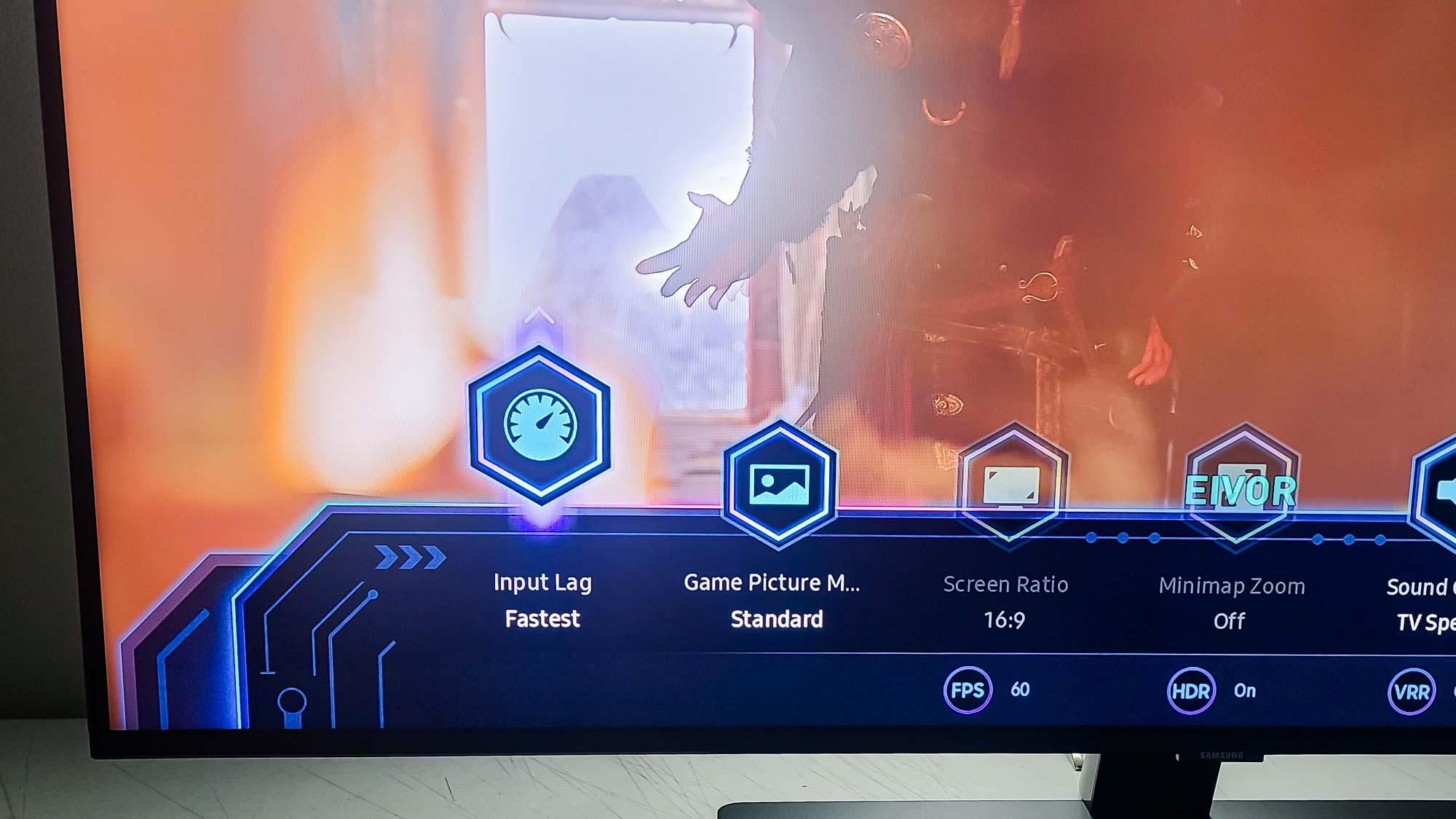

Somewhat less successful is its integrated Gaming Hub, which combines all your physical and streaming game titles and music in one area accessible from the main home screen. It works, but unless you have multiple consoles and a lot of games and songs you’re juggling at once, it verges on being more trouble than it’s worth.
Samsung Q80B QLED TV (QN50Q80BAF): Smart TV interface
Samsung’s Tizen smart TV interface remains a mixed blessing. It’s crisply designed, with its primary screen well organized to balance apps with currently broadcasting shows and what you’ve been watching recently; even the ads at the top don’t get in the way.
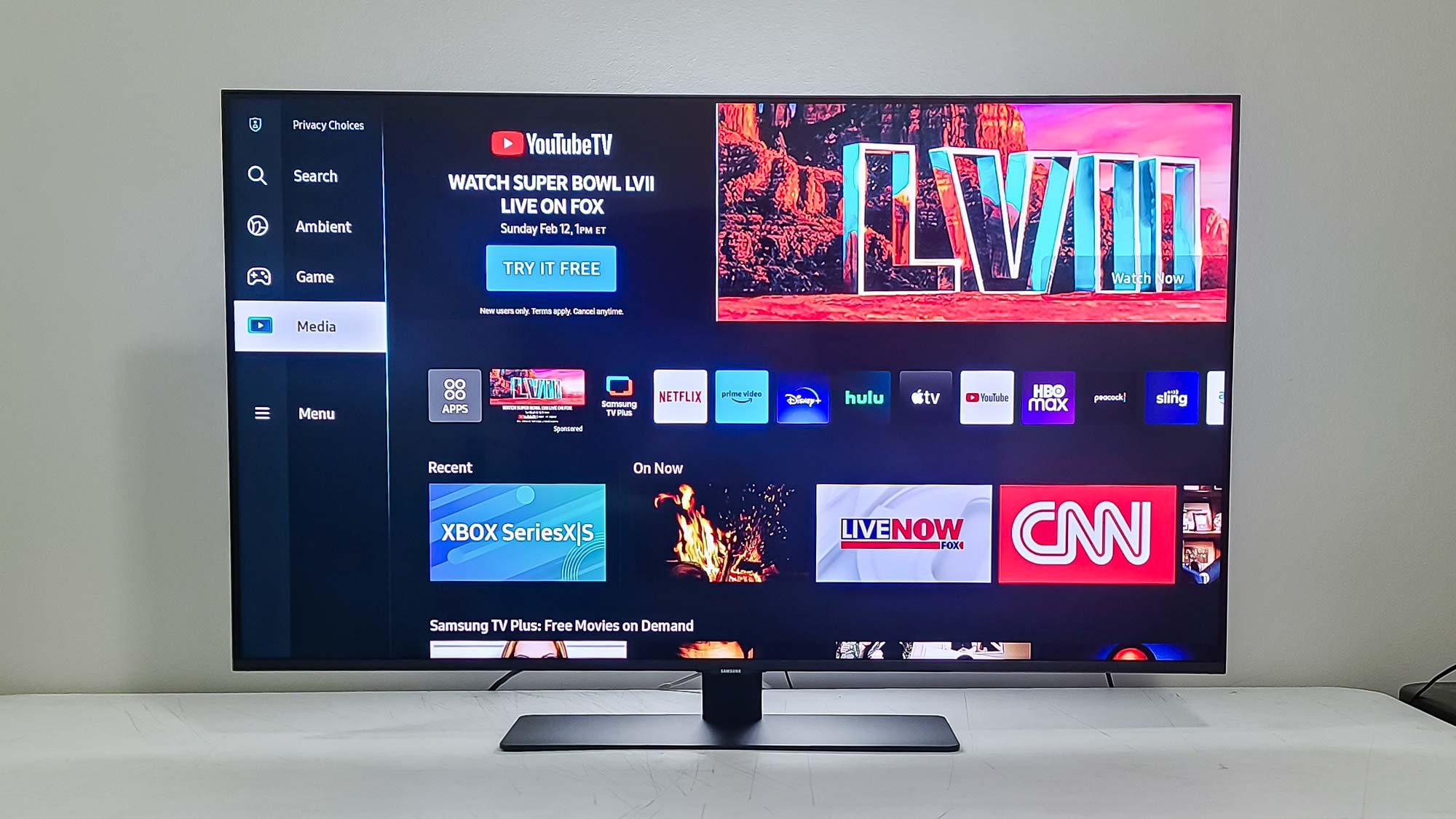
Everything is just a little clunkier than it should be. Each of the first four options on the left navigation bar (in addition to the Media home screen, there are Search, Ambient, and Game) takes you to a separate “app,” rather than building them in more smoothly to the main interface. This slows down doing anything other than selecting something to watch from the main screen, which is less true of the slicker Google TV interface that’s becoming more and more visible in the market (particularly on Sony TVs). Selecting Menu from the nav opens it on the lower half of the screen, and provides front-and-center links for Settings, Connected Devices, and Multi View, but you can’t just navigate back to where you were, which isn’t intuitive.
Tizen could easily be a killer interface, but it needs a refresh to speed up and clarify its interactions to keep pace with newer, fresher competitors. Maybe it will get one in the next generation.
Samsung Q80B QLED TV (QN50Q80BAF): Remote
Like Tizen, Samsung’s choice of remote is a stellar example of “almost, but not quite.” It’s called the SolarCell Remote, because it’s powered by a solar panel on the back that obviates the need for changing batteries — just stick it in the window or under a lamp for a while, and you’re good to go. (You can even check the power level in the settings.) The black plastic remote is only 6.3 inches long, and not overly crowded, which would at first seem to be a good thing.

But it might be too minimalistic for effective use. Many of the key controls are there: Power, Microphone (for activating your choice of voice assistant), Back, Home, Play/Pause, Volume, Channel, and dedicated shortcut buttons for Netflix, Prime Video, Disney+, and Samsung TV Plus (Samsung’s underwhelming free streaming network). But there is a three-way button for Colors, Numbers, and Settings that makes accessing any of those choices a tangled affair, and another button for Multi View, which is not an everyday function, at least for me.
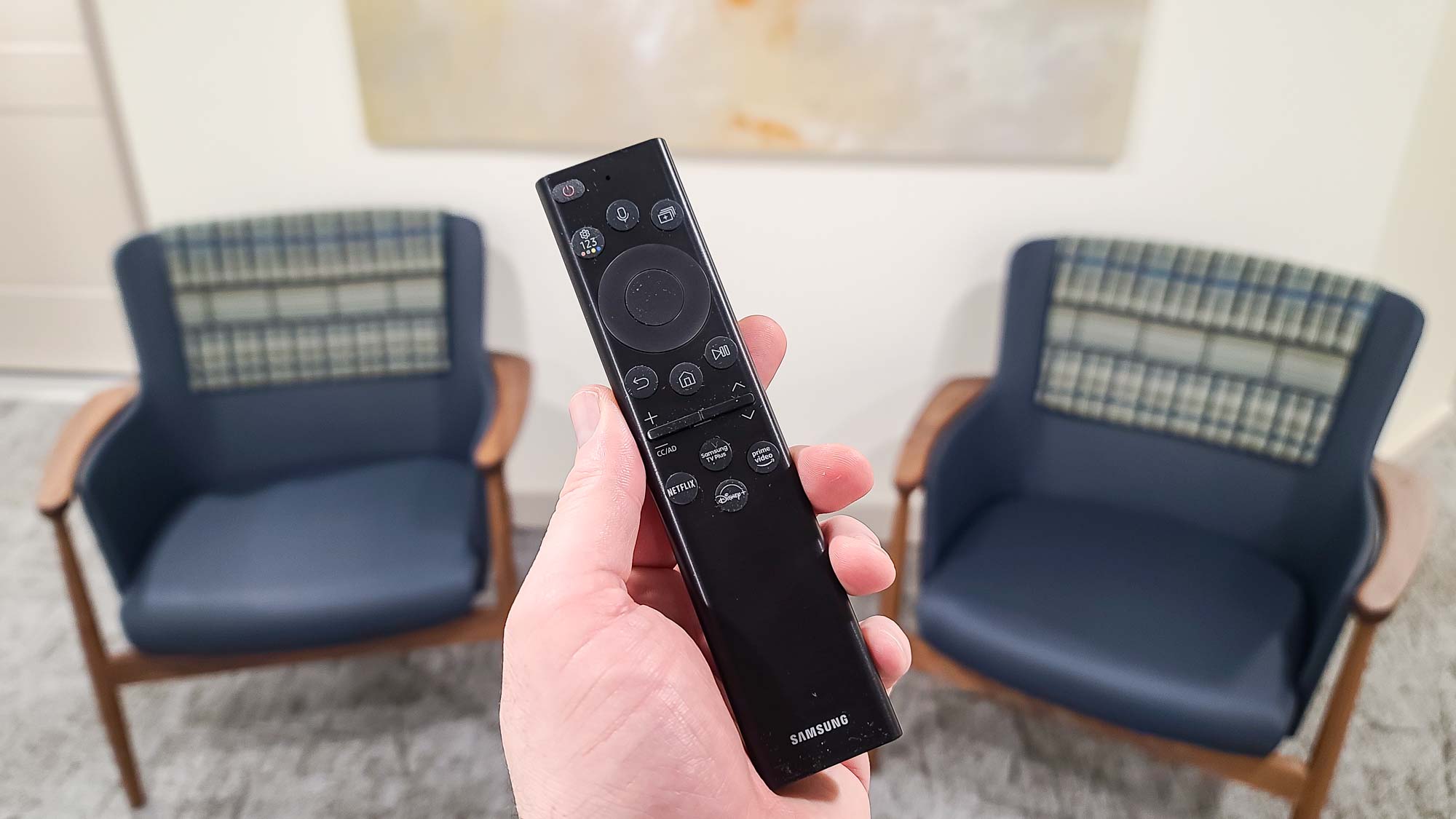
There are no dedicated buttons for Inputs or Mute, which come up all the time — you can access the former through Settings and the latter (along with other functions) by manipulating additional buttons, but that’s a hassle most other major TV manufacturers don’t submit you to.
Although the new Sony remote has five more buttons, it feels a lot more functional without being busier. Samsung’s lean, mean, environmentally clean remote is a winner in theory, but it’s still in need of more practice to earn its place in the spotlight rather than merely the sunlight.
Samsung Q80B QLED TV (QN50Q80BAF): Verdict
In the realm of midsize, middle-tier TVs, the Samsung Q80B QLED TV (QN50Q80BAF) more than holds its own in terms of both picture and sound — something that’s rare outside the highest price strata. Considering there’s stiff competition from the likes of Sony and even Samsung’s other surrounding lines, that’s no small accomplishment.
Yes, it’s held back a hair by its HDR handling and its lack of HDMI 2.1 ports. But these won’t be deal-breakers for everyone, and what you get in exchange will be more than good enough if these things aren’t high priorities for you. (And if you can spare the dough and the space, the larger models would even fix the sound issues we had.) If a bright picture with clarion sound is what you care about most, you can easily get it without overspending with the QN50Q80BAF.
Matthew Murray is the head of testing for Future, coordinating and conducting product testing at Tom’s Guide and other Future publications. He has previously covered technology and performance arts for multiple publications, edited numerous books, and worked as a theatre critic for more than 16 years.
